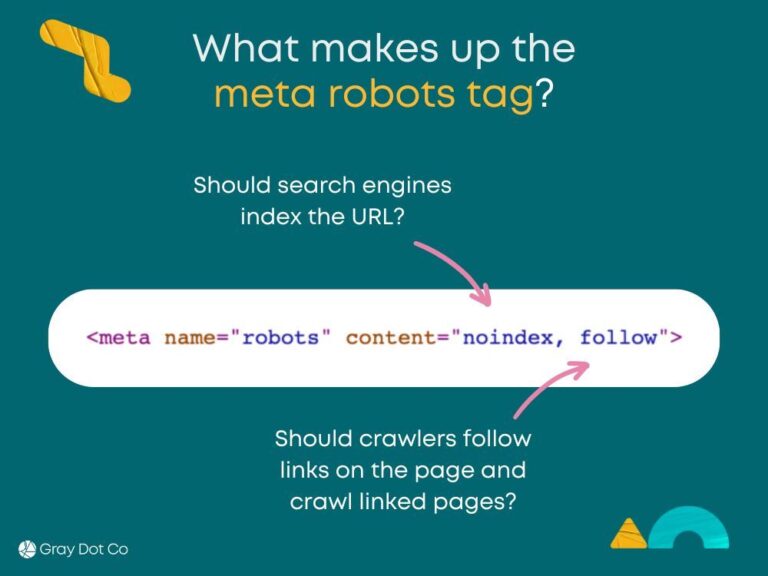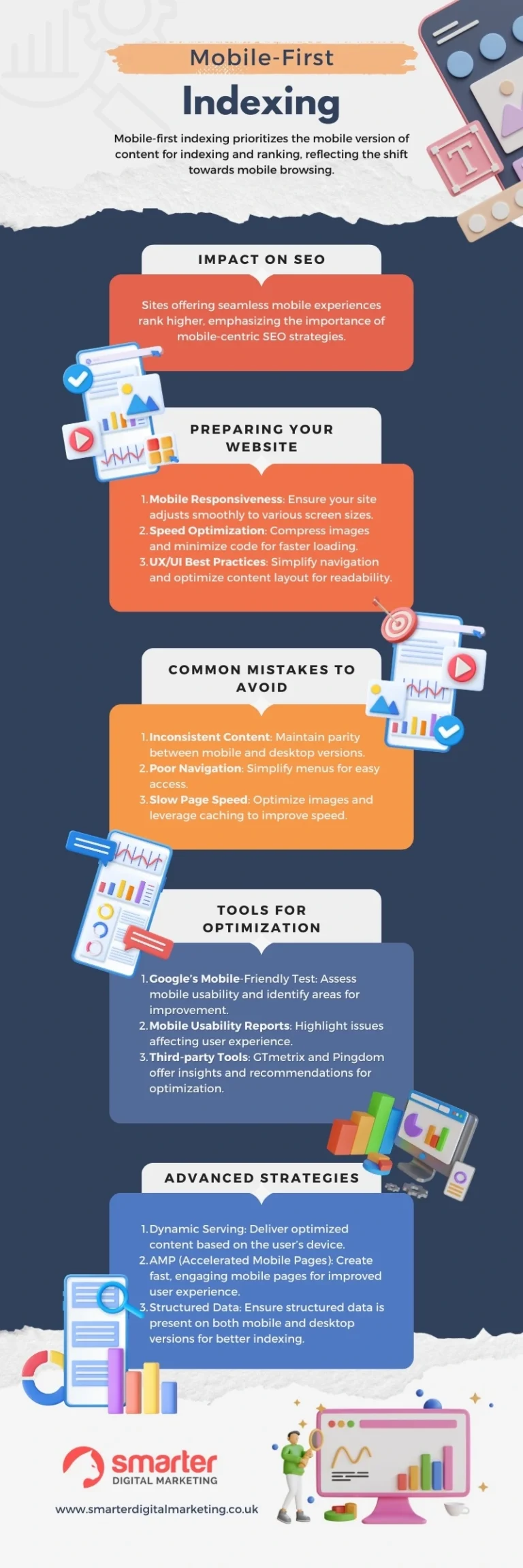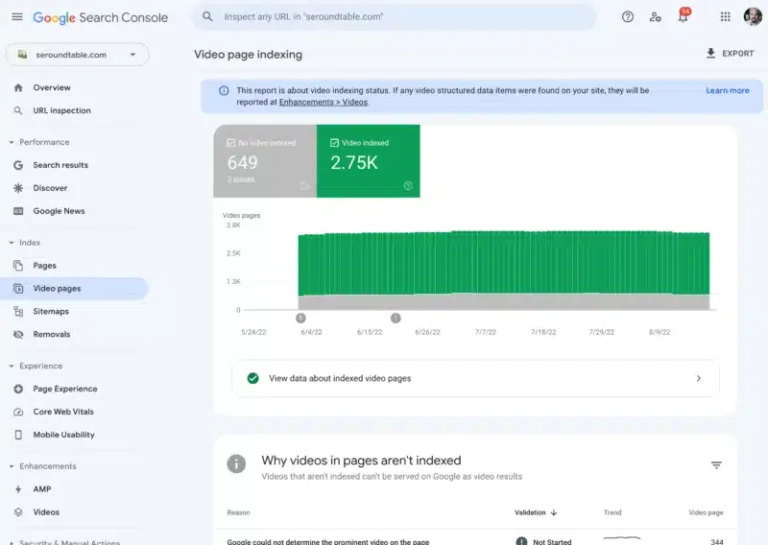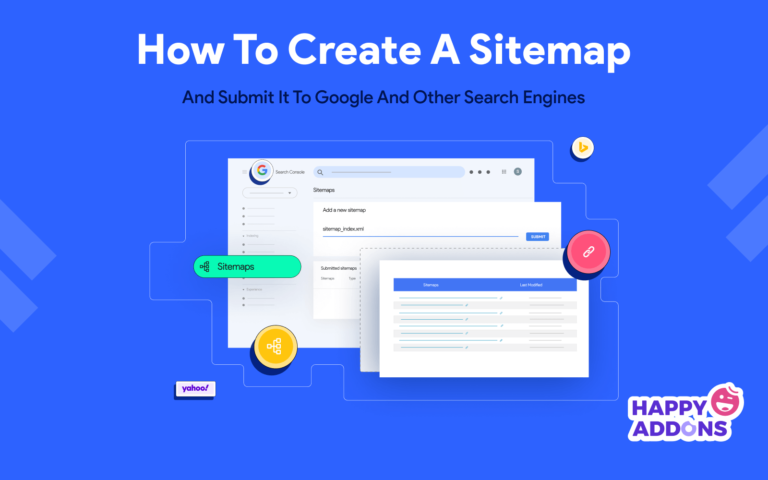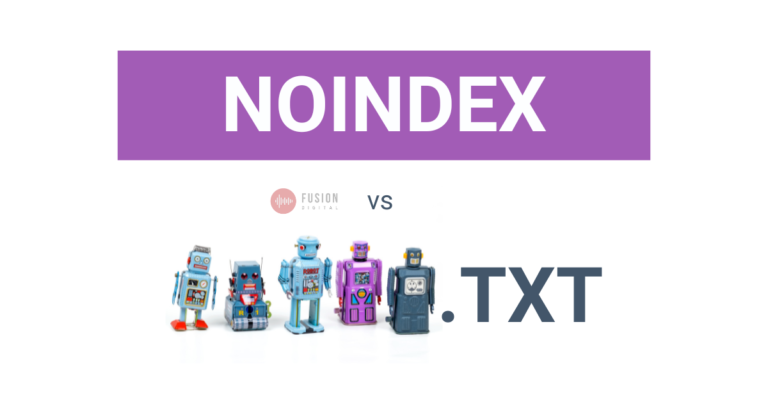How Website Optimization for Google indexing works , focus on improving site structure and enhancing page load speed. Regularly update your sitemap and use robots.txt to guide search engine crawlers.
Large websites can present unique challenges for SEO. With multiple pages and a wealth of content, ensuring effective Google indexing becomes crucial. A well-optimized site improves visibility and user experience. Implementing a clear hierarchy helps both users and search engines navigate your content.
This strategy not only enhances indexing but also boosts organic traffic. By prioritizing page load speed and ensuring mobile-friendliness, you further increase your site’s chances of ranking higher. Regular audits and updates keep your content fresh and relevant. Taking these steps positions your large website for long-term success in search engine results.

Credit: www.searchenginejournal.com
Introduction To Website Optimization
Website optimization is essential for improving online visibility. It makes websites easier for search engines to crawl. Large websites often face unique challenges. Understanding these challenges helps in effective optimization.
The Importance Of Google Indexing
Google indexing is crucial for website visibility. It helps Google find and rank your pages.
- Increased Traffic: Better indexing leads to more visitors.
- Higher Rankings: Well-indexed sites rank higher in search results.
- Better User Experience: Quick loading times improve user satisfaction.
Effective Google indexing directly impacts your site’s success. Websites not indexed properly may lose potential traffic.
Challenges With Large Websites
Large websites have unique obstacles in SEO optimization. Here are some common challenges:
- Complex Structure: Many pages can confuse search engine crawlers.
- Slow Loading Times: More content can lead to longer load times.
- Duplicate Content: Similar pages may confuse search engines.
- Broken Links: More links increase the chances of errors.
Addressing these challenges is vital for effective optimization. Focus on a clear structure, fast loading, and unique content.
Structuring Your Website For Better Crawling
Proper structure is key to help Google index your large website. A well-structured site makes it easier for search engines to find and understand your content. Focus on two main areas: sitemaps and URL hierarchy.
Sitemap Essentials
A sitemap acts as a roadmap for your website. It tells search engines about your pages. Here are some essentials for a good sitemap:
- XML Format: Use XML format for search engines.
- Update Regularly: Keep your sitemap current with new pages.
- Include All Pages: List all important pages in the sitemap.
- Submit to Google: Use Google Search Console to submit your sitemap.
Check your sitemap for errors. An error-free sitemap helps with crawling.
Url Hierarchy And Navigation
Your URL structure impacts how Google crawls your site. A clear URL hierarchy helps search engines find pages easily. Follow these guidelines:
- Use Simple URLs: Keep URLs short and descriptive.
- Organize by Categories: Group related content together.
- Use Hyphens: Separate words in URLs with hyphens.
- Avoid Special Characters: Stick to letters and numbers.
Good navigation supports user experience. Simple menus help users find content fast.
| URL Structure Tips | Benefits |
|---|---|
| Short URLs | Easy to read and remember |
| Descriptive URLs | Helps Google understand page content |
| Logical Hierarchy | Facilitates better crawling |
By optimizing your sitemap and URL structure, you enhance Google’s ability to index your large website.
Improving Website Speed
Website speed is crucial for Google indexing. Faster websites rank higher in search results. Users enjoy quick loading times. Slow sites frustrate visitors and increase bounce rates. Optimize your site for speed to enhance user experience.
Leveraging Browser Caching
Browser caching helps store website data locally. This reduces load time for returning visitors. Here are key steps to implement caching:
- Set up cache expiration headers.
- Use a caching plugin for WordPress.
- Enable Gzip compression to reduce file sizes.
These steps help browsers remember content. Visitors experience faster loading times on repeat visits. Check your caching status using tools like Google PageSpeed Insights.
Optimizing Images And Videos
Large images and videos slow down your site. Optimizing them improves loading speed. Follow these tips:
- Use image formats like JPEG or WebP.
- Compress images without losing quality.
- Use responsive images for different devices.
For videos, consider these methods:
- Embed videos instead of hosting them.
- Use lazy loading for off-screen media.
These practices significantly enhance your site’s speed. A faster site leads to better user engagement and lower bounce rates.
Mobile Optimization
Mobile optimization is essential for large websites. It ensures users have a great experience on mobile devices. Google prioritizes mobile-friendly sites in search rankings. A well-optimized mobile site increases traffic and engagement.
Responsive Design Fundamentals
Responsive design adapts your website to any screen size. It ensures content looks good on phones and tablets. Here are key components:
- Flexible Layouts: Use percentages instead of fixed pixels.
- Media Queries: Apply different styles based on screen width.
- Fluid Images: Scale images to fit their containers.
Consider these benefits of responsive design:
| Benefit | Description |
|---|---|
| Improved User Experience | Users enjoy seamless navigation on all devices. |
| Higher Conversion Rates | More visitors complete desired actions on mobile. |
| Cost-Effective | One site for all devices reduces maintenance costs. |
Accelerated Mobile Pages (amp)
Accelerated Mobile Pages (AMP) is a framework. It speeds up page loading times on mobile devices. AMP pages load almost instantly. This enhances user experience significantly.
Key features of AMP include:
- Lightweight Code: AMP uses streamlined HTML.
- Cache Technology: Pages are stored for quick access.
- Limited JavaScript: Reduces loading delays.
Consider these benefits of using AMP:
- Faster Load Times: Users stay engaged with quick loading.
- Better SEO: Google favors AMP pages in search results.
- Increased Visibility: AMP pages often appear in special search carousels.
Implementing AMP can lead to better traffic and user retention.
Enhancing On-page Seo
On-page SEO plays a crucial role in optimizing large websites for Google indexing. It involves improving elements on your site. This helps search engines understand your content better. Strong on-page SEO boosts your rankings and drives traffic.
Keyword Optimization
Effective keyword optimization is vital for large websites. Start by researching relevant keywords. Use tools like Google Keyword Planner. Focus on long-tail keywords for better targeting.
- Identify main topics of your site.
- List keywords related to each topic.
- Analyze competitors’ keywords.
Incorporate keywords naturally into your content. Use them in:
- Headings and subheadings.
- First 100 words of your content.
- Image alt text.
Avoid keyword stuffing. This can harm your rankings. Keep the content readable and engaging. Aim for a keyword density of about 1-2%.
Meta Tags And Descriptions
Meta tags and descriptions are essential for SEO. They help search engines understand your pages. Create unique meta tags for each page. Use relevant keywords in these tags.
| Meta Tag | Purpose |
|---|---|
| Title Tag | Defines the title of the page. |
| Meta Description | Summarizes the page’s content. |
| Header Tags (H1, H2, H3) | Organizes content structure. |
Write compelling meta descriptions. Keep them under 160 characters. Encourage clicks with strong calls to action. Review and update meta tags regularly.
By focusing on keyword optimization and meta tags, you can significantly enhance your on-page SEO. This leads to better indexing by Google and improved visibility.
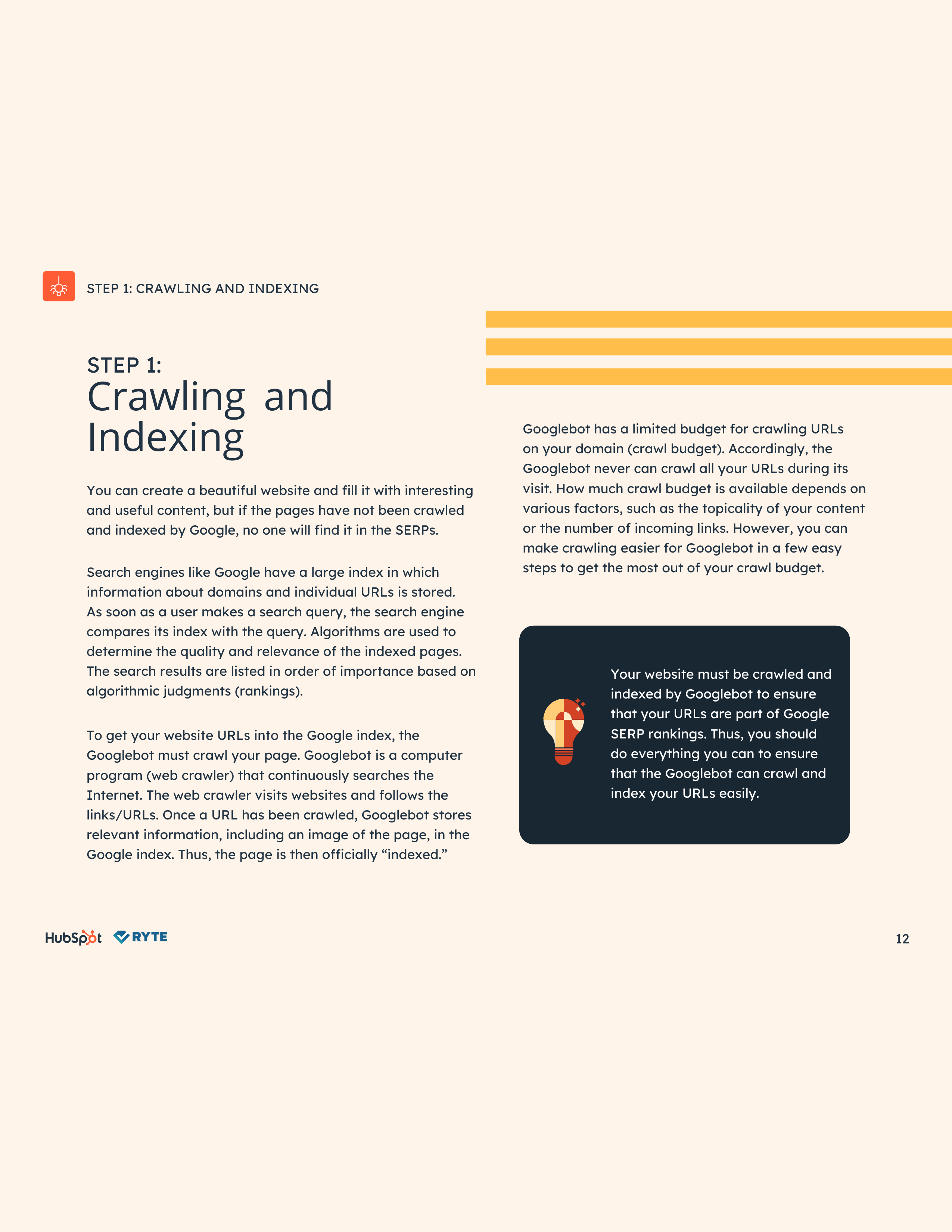
Credit: offers.hubspot.com
Leveraging The Power Of Content
Content is the backbone of any large website. High-quality content attracts visitors and keeps them engaged. Google loves fresh and valuable information. Optimizing content helps improve your site’s indexing. This boosts your search engine ranking. Let’s explore key strategies to optimize content effectively.
Quality Over Quantity
Focusing on quality is crucial for large websites. Quality content builds trust and authority. Here are some tips to enhance content quality:
- Research topics: Understand what your audience wants.
- Create original content: Avoid duplicating existing materials.
- Use clear language: Make sure everyone can understand.
- Update regularly: Keep content fresh and relevant.
High-quality content encourages users to stay longer. This decreases bounce rates and improves rankings. Use tools like Grammarly or Hemingway to refine your writing.
Strategic Internal Linking
Internal linking is vital for large websites. It helps Google understand your site’s structure. Here are some benefits of internal linking:
| Benefit | Description |
|---|---|
| Improved Navigation | Helps users find related content easily. |
| Enhanced Crawlability | Allows Google to index pages more efficiently. |
| Boosted Page Authority | Distributes ranking power across your site. |
Use descriptive anchor text for links. Avoid generic phrases like “click here.” Link to relevant pages within your site. This keeps users engaged and improves SEO.
Technical Seo For Large Websites
Large websites require special attention for effective Google indexing.
Technical SEO optimizes site structure, speeds up loading, and improves user experience.
Focus on key areas to ensure search engines can crawl and index your content efficiently.
Handling Duplicate Content
Duplicate content confuses search engines. It can harm your website’s ranking.
- Identify duplicate pages with tools like Screaming Frog or Sitebulb.
- Use canonical tags to specify the main version of a page.
- Implement 301 redirects to direct users to the preferred URL.
Regular audits help keep your content unique. Maintain a clean URL structure.
Avoid using the same content in multiple locations.
Implementing Schema Markup
Schema markup enhances your website’s visibility in search results.
It provides structured data for search engines.
| Type of Schema | Purpose |
|---|---|
| Article | Enhances blog posts and news articles. |
| Product | Improves e-commerce product visibility. |
| Event | Displays upcoming events in search results. |
Use tools like Google’s Structured Data Markup Helper for easy implementation.
Testing with the Rich Results Test ensures proper setup.
Schema markup boosts click-through rates and improves search rankings.

Credit: www.singlegrain.com
Monitoring And Maintaining Your Seo
Maintaining your SEO is crucial for large websites. It ensures that search engines index your pages correctly. Regular monitoring helps identify issues early. This leads to better visibility in search results.
Using Google Search Console
Google Search Console is a powerful tool. It helps monitor your site’s performance. Here are some key features:
- Index Coverage Reports: See which pages are indexed.
- Performance Reports: Track clicks and impressions.
- Mobile Usability: Check for mobile-friendly issues.
Follow these steps to use it effectively:
- Sign up for Google Search Console.
- Add your website property.
- Submit your sitemap.
- Review the index coverage report regularly.
Fix any errors shown in the reports. This will improve your site’s indexing.
Regular Seo Audits
Conducting regular SEO audits is essential. Audits help find and fix issues. Here are areas to focus on:
| SEO Element | Check Frequency | Tools |
|---|---|---|
| Site Speed | Monthly | Google PageSpeed Insights |
| Broken Links | Quarterly | Ahrefs, Screaming Frog |
| Content Quality | Bi-Annually | SEMrush, Grammarly |
Perform audits on a set schedule. This keeps your site healthy and competitive. Adjust your strategies based on audit findings.
Frequently Asked Questions
How Can I Improve My Website’s Indexing Speed?
To enhance your website’s indexing speed, ensure your site is mobile-friendly and has a clear structure. Use an XML sitemap to guide search engines through your pages. Regularly update your content and fix broken links to keep your site relevant.
Lastly, leverage social media to promote new content.
What Tools Help With Website Indexing Optimization?
Several tools can aid in website indexing optimization. Google Search Console is essential for monitoring indexing status. Use tools like Screaming Frog for site audits. Additionally, SEMrush and Ahrefs can identify indexing issues and recommend fixes. These resources provide valuable insights for improving your site’s performance.
How Do I Create An Xml Sitemap?
To create an XML sitemap, use an online generator or your CMS. Ensure it includes all important pages and is updated regularly. Submit the sitemap through Google Search Console for better visibility. Additionally, link to the sitemap in your robots.
txt file to guide search engines effectively.
What Is The Role Of Robots.txt In Indexing?
The robots. txt file instructs search engines which pages to crawl or avoid. Properly configuring this file can enhance indexing efficiency. Ensure it allows access to essential pages while blocking unimportant ones. A well-structured robots. txt file can prevent duplicate content issues and improve your site’s SEO performance.
Conclusion
Optimizing large websites for Google indexing is essential for visibility. Implementing effective strategies can enhance your search rankings. Regularly update content, streamline site structure, and ensure mobile responsiveness. These practices not only improve indexing but also elevate user experience. Stay proactive to maintain your site’s performance and relevance in search results.


